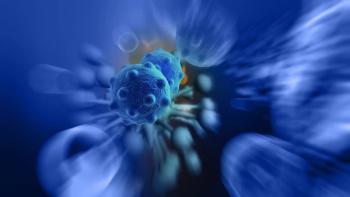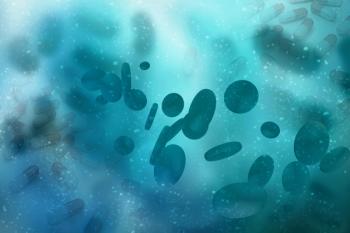
Inherited Risk Factor Found in One-Third of African Americans Multiple Myeloma Patients
More than one-third of African American patients with monoclonal gammopathy of undetermined significance or multiple myeloma were found to have an inherited risk factor for the disease, according to the results of a European study.
More than one-third of African-American patients with monoclonal gammopathy of undetermined significance (MGUS) or multiple myeloma were found to have an inherited risk factor for the disease, according to the results of a European study.
“Since hyperphosphorylated paratarg-7 (pP-7) carrier state was shown to be the first molecularly defined autosomal-dominantly inherited risk factor for MGUS and multiple myeloma in a European population, the prevalence of pP-7 carrier state among African Americans who have a significantly higher incidence of MGUS/multiple myeloma is of interest,” wrote Michael Pfreundschuh, MD, of Saarland University Medical School in Homburg, Germany, and colleagues.
According to Pfreundschuh, because more than one-third of paraproteins in African-American patients with MGUS/multiple myeloma recognize pP-7 as an autoantigenic target, “this post-translationally modified autoantigen is the probable autoantigenic stimulus for the development of MGUS/multiple myeloma in these patients.”
Using isoelectric focusing and ELISA, Pfreundschuh and colleagues tested the prevalence of a pP-7 carrier state and the incidence of P-7–specific paraproteins in African American, European, and Asian patients with MGUS/multiple myeloma and healthy controls. They
Of the patients with MGUS/multiple myeloma, 37% of African Americans had a paraprotein reacting with P-7 compared with 16.7% of Europeans (P < .001) and 4% of Japanese patients (P < .001). The difference between European and Japanese patients was also statistically significant.
Results showed that the prevalence of healthy pP-7 carriers was also greater among healthy African-Americans (11%) compared with healthy Europeans (1.5%; P < .001) and healthy Japanese (0.4%; P < .001) participants.
“It is surprising that such a high percentage of MGUS/multiple myeloma [cases] are probably initiated by a single (post-translationally) modified autoantigen,” Pfreundschuh told Cancer Network. “Since the hyperphosphorylated variant of paratarg-7 is inherited in an autosomal-dominant fashion, relatives of MGUS/multiple myeloma patients, with a paratarg-7–specific paraprotein at risk for MGUS/multiple myeloma, can be identified.”
The prevalence of pP-7 carriers was lower in all ethnic groups among healthy patients than among patients with MGUS/multiple myeloma. Therefore, healthy controls had an elevated risk for the condition among African American (odds ratio [OR] = 4.8; 95% confidence interval [CI], 2.2–10.3), European (OR = 13.6; 95% CI, 6.3–29.3), and Japanese (OR = 11.5; 95% CI, 1.4–94.1) controls.
Newsletter
Stay up to date on recent advances in the multidisciplinary approach to cancer.





